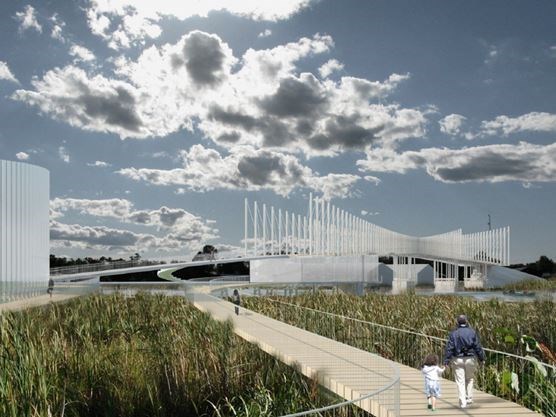An oft-stalled, two-decade-long project to construct a new pedestrian bridge over the Atherley Narrows and to develop an interpretive centre to commemorate the ancient fish weirs below, could soon be back on track.
Coun. Tim Lauer has been one of the driving forces behind the ambitious and convoluted initiative that started in 1989.
The project began as a way to provide a better link for snowmobilers over the water and evolved into a way to recognize the historical and cultural significance of the fish weirs which are estimated to be more than 5,000 years old.
During a pitch to his council colleagues Monday night seeking support to move forward, Lauer said that rich history should be celebrated.
“(It is) of utmost importance to showcase this nationally significant historic site while commemorating an amazing, local Indigenous story that predates the pyramids,” said Lauer, who added he is “always blown away by how long that fish fence has been there.”
To move the process forward, Lauer asked - and received - approval from his council colleagues Monday night to work with the Ministry of Natural Resources and the Canadian National Railway to obtain a “quitclaim” deed for the bridge abutment on the city side of the Atherley Narrows.
City staff will also offer help to Ramara Township to navigate a similar process for the abutment on the Ramara side.
Lauer also received support from his fellow councillors to have staff prepare a capital budget request to cover the costs of obtaining historical documentation of the swing bridge and an estimate of the price tag to remove the swing bridge.
In summarizing the decades-long effort, Lauer noted a feasibility study was conducted that concluded a new bridge was feasible.
In addition, a lengthy environmental assessment (EA) has been completed.
“The EA was completed in November 2015 and determined that building a new bridge provides the most historically relevant opportunity to protect and commemorate the Mnjikaning Fish Weirs, create a place of ceremony for Aboriginal people, provide an easy and safe link for active transportation and/or snowmobile users and establish a new point of interest along the Trent-Severn Waterway,” concludes Lauer’s report.
“We do know those abutments and pier will support, structurally, what we want to put there,” said Lauer. The problem is “actually gaining ownership of the land that we require.”
Even though Orillia and Ramara bought the rail corridors years ago, “the stubs at the end that abut The Narrows were never included. We’re not sure why but were going to find out.”
To do so, the city needs to acquire those pieces of property “through what is known as a quitclaim, which is a complicated process,” said Lauer.
That is the process that will now begin.
The other challenge to come is the removal of the swing bridge.
“It’s complicated by the fact of its designated historic value. We have to deal with that and working over a national historic site. You just don’t go in and rip it apart and let things drop in the water. It’s a little more complicated,” Lauer noted.
The more daunting challenge may be the fly in the ointment - funding. The price tag is estimated to be about $8 million.
That price tag includes an interpretive centre, a sacred gathering space and wooden boardwalk highlighting the fish weirs as well as a safe and improved pedestrian, cyclist and snowmobile access.
This project “has always been predicated on our ability to access funding from the federal or provincial government,” said Lauer. “It’s probably an $8 million build - that’s a ballpark figure - if we go with a bridge that includes the interpretive components, so it’s a significant amount of money.”
Lauer estimates the city has likely spent about $150,000 to date over the last two decades.
The long-time Ward 4 councillor says he is hoping this term of council can “have some sort of resolution when it comes to funding and land ownership.”
Coun. Pat Hehn congratulated Lauer on his “tenacity” in pursuing this project.
She explained how her daughter-in-law, who is from China, was astounded when she saw a piece of the ancient fish weir while visiting the Orillia Museum of History.
She had been told Canada was a young country and “didn’t know our history went back 5,000 years,” Hehn explained.
She said working with local Indigenous people to complete this project is a “phenomenal thing we can do as a community.”
